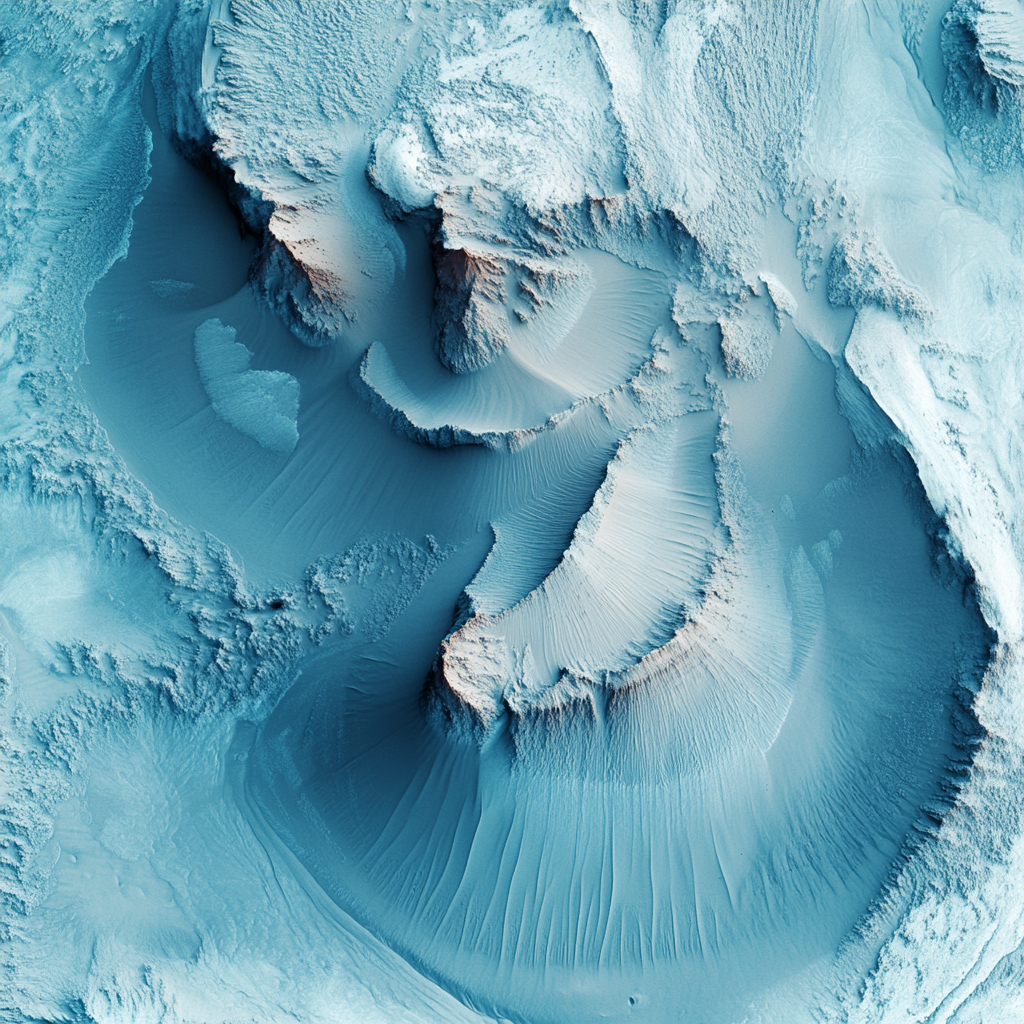
Mars Orbiters Capture Mysterious Landscape Near Icy South Pole (Photos)
Mars: The Icy Enigma Revealed by Orbiters
Ah, Mars. That tantalizing red dot hanging in our sky, sparking imaginations while making our Earthly concerns seem wonderfully trivial. What if I told you that recent intel from savvy spacecraft has peeled back the layers of mystery surrounding the Martian icy south pole? That's right! Buckle up as we delve into the cryptic terrain of this beguiling planet, where bizarre shapes and phenomena await to tease your science-loving spirit.
So here's the deal: the European Space Agency (ESA), with its Mars Express and Trace Gas Orbiter, have donned their cosmic detective hats. They’ve landed some impressive images coming from the south polar region, particularly from a head-scratchingly named spot called Australe Scopuli. What did they find? A Martian landscape layered with ice and dust, boasting enigmatic patterns that shout "solve me" to anyone willing to listen.
Now, hold onto your space helmets, because "cryptic terrain" isn't just a buzzword thrown around by bored scientists. Oh no! This term evokes a sense of mystery, suggesting that these dark polygon shapes have sprung up to intrigue and beckon our curiosity. They stand out like cosmic riddles against the radiant, frozen background — a guesswork buffet for geologists and dreamers alike.
But how do these strange formations come to be? Well, grab your science goggles because we're diving into the thrilling process of sublimation. This isn't just a word to hear at a cocktail party, it’s the magic trick that transforms solid carbon dioxide ice straight into gas, skipping the watery phase altogether. Imagine the scene: it’s springtime in the southern polar cap, and as the sun kisses the ice, the ground underneath begins to heat up. It’s like a cosmic pressure cooker underneath the surface, with gas trapped and ready for action. When the pressure reaches its limit, it bursts forth in dramatic jets, giving rise to those striking dark patches birthed from the deep Martian underbelly.
You can almost picture it—these energetic jets, resembling spiders as they emerge from the icy crust, scattering dark dust like sprinkles on a cosmic cupcake. And the result? An awe-inspiring landscape that not only looks cool but can unlock secrets about Mars’ climatic past and geological shenanigans. Who knew geology could ring with such poetic wonder?
Let’s pause here and reflect. These polygonal beauties can remind us of the permafrost patterns seen right here on Earth, hinting that Mars isn’t just a dry, desolate rock but an active player in the solar system. It’s a realm of interactions—between its surface, atmosphere, and those unsung heroes of underground ice. So next time someone asks what else could be lurking on the Red Planet, just shrug with a twinkle in your eye and whisper, "subsurface ice."
Ah, but we’re not done! The fun doesn't end with strange shapes—oh no, dear readers! Among the myriad textures on Mars's icy facade lies an almost otherworldly feature known as fan-shaped deposits. Imagine these formations spread out like nature's own origami designs. Formed by the same energetic gas jets, these shapes range in size and stand as tantalizing indicators of the changing Martian seasons. It's as if Mother Nature herself is doodling on the planet's surface while no one is watching.
Now, why should we care about these findings? Simple—our exploratory adventures hinge on understanding Mars’ geological activities! The more we learn, the better equipped we'll be to predict future climatic behavior, which in turn is vital as we chase down water reservoirs and try to grasp the intricate dance of freeze-thaw cycles that shape our red neighbor.
Let’s not forget the coup de grâce—the stunning imagery beamed back to us by the Mars Express and Trace Gas Orbiter, each picture a testament to humanity's ability to reach beyond its terrestrial confines. These spacecraft are like the paparazzi in this cosmic drama, catching moments as the planet paintbrushes itself in dark polygons and frost-lined edges. What brilliant gems they’ve delivered to our telescopes!
- Those dark polygonal shapes: They leap out at you, a brash contrast against the soft, glistening frost!
- The frost: A pretty framing to these bold, dark markings, inviting a double-take where Martians might just have a frosty drink at a cosmic café.
- Fan-shaped deposits: Like surreal desert blooms, they sprout across the landscape, each signature a reminder of the planet's changing seasons.
In the grand scheme of it all, the revelation of cryptic terrain near Mars' icy south pole marks yet another exciting chapter in our astronomical misadventures. It deepens our understanding of the Red Planet's climatic ballet while also tantalizing our imaginations with prospects yet to unfold.
Now, if the mysteries of the universe and the tête-à-tête with the unknown spark something in you—if you awaken each day yearning for more, wanting to stay ahead of the cosmic curve—then here's the deal: subscribe! Want to stay up to date with the latest news on neural networks and automation? Subscribe to our Telegram channel: @channel_neirotoken
Remember, space is a brut of wonderment just waiting for us to crack its codes! Join the ride, folks, and let's unravel the universe—one celestial enigma at a time!

